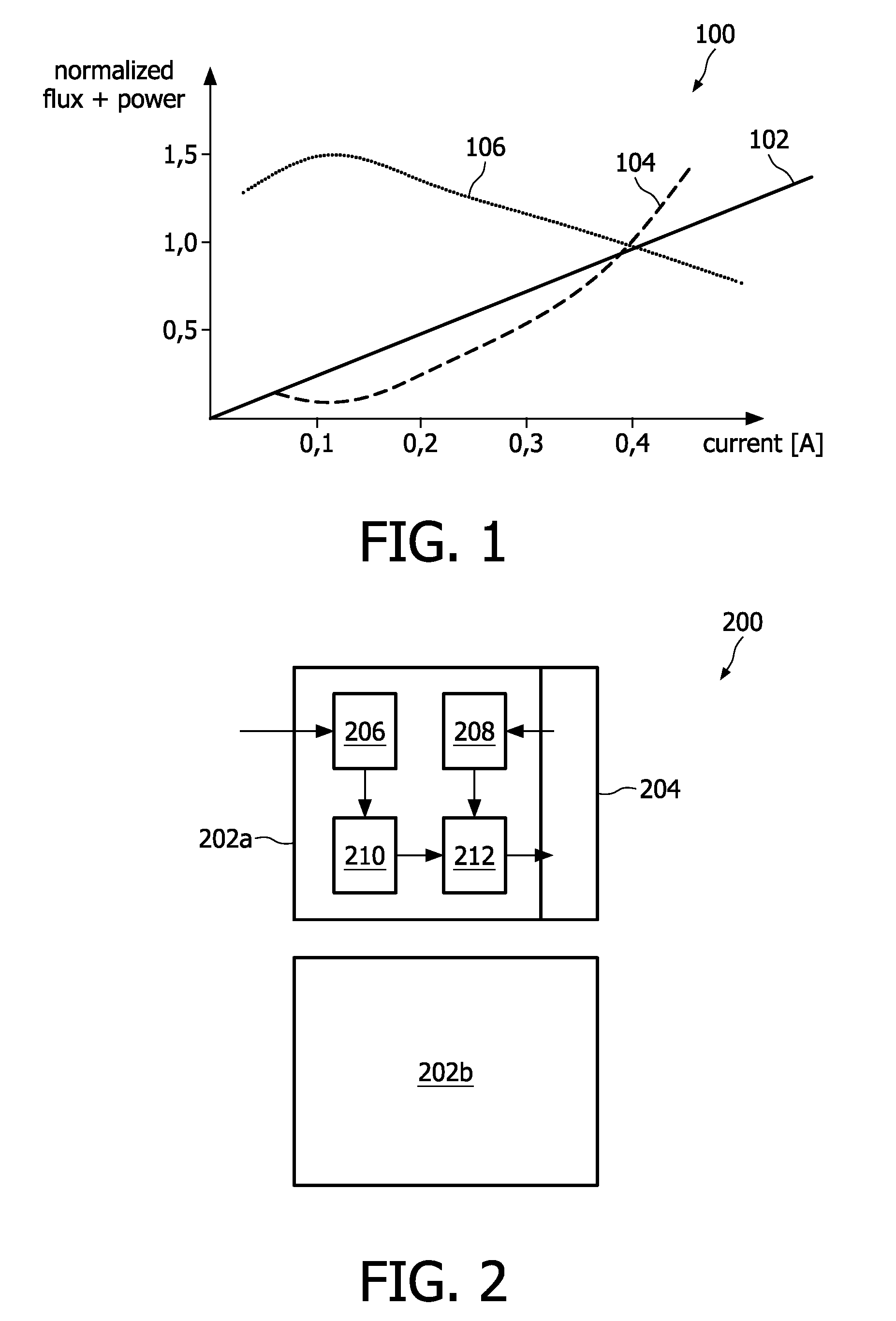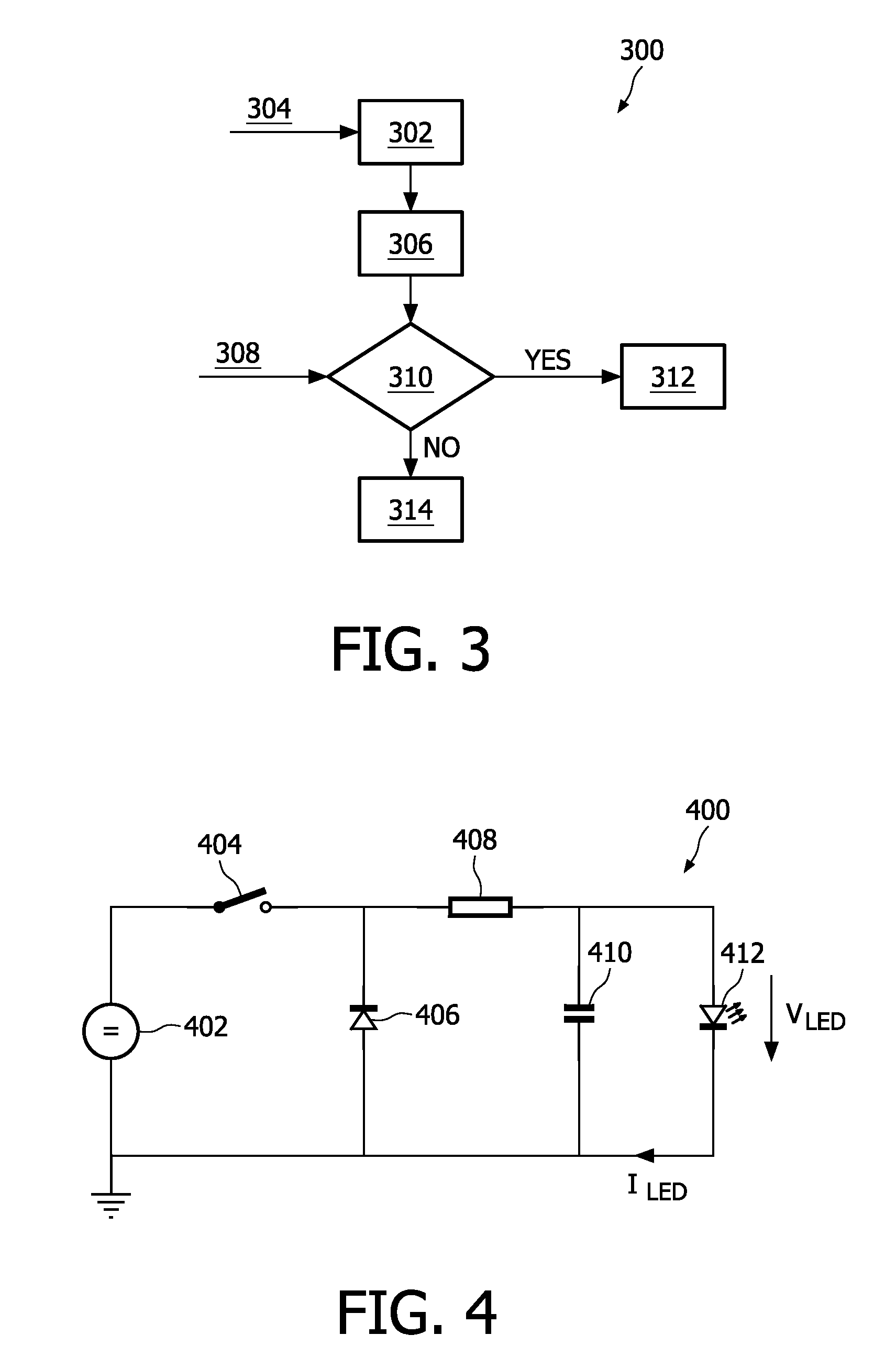Operating solid-state lighting elements
a technology of solid-state lighting and lighting elements, which is applied in the direction of electric variable regulation, process and machine control, instruments, etc., can solve the problems of dimming of solid-state light sources without accounting for their thermal constraints, and efficient lumen output, so as to reduce the brightness level of solid-state light sources, reduce the effect of luminous efficacy and efficiency
- Summary
- Abstract
- Description
- Claims
- Application Information
AI Technical Summary
Benefits of technology
Problems solved by technology
Method used
Image
Examples
Embodiment Construction
[0033]The present invention ensures an increase of the luminous efficacy for solid-state light sources, even at low brightness levels. The use of amplitude modulation to dim the brightness level of the solid-state light sources is suggested in monochrome lamps as well as in multi-color lamps, such as RGB LED lamps. This amplitude modulation is applied until the luminous efficacy is maximum. It is further proposed to keep the current amplitude at this value and use pulse-width modulation for dimming the brightness level to lower values. Using the inventive method allows dimming of solid-state lighting units with an optimized luminous efficacy in both monochrome and colored solid-state light sources.
[0034]The method and device according to the invention utilize the fact that the luminous efficacy and the efficiency of the luminous flux of a solid-state lighting unit depends on the driving power and the luminous flux of the lighting unit. FIG. 1 is a chart 100 illustrating the dependen...
PUM
 Login to View More
Login to View More Abstract
Description
Claims
Application Information
 Login to View More
Login to View More - R&D
- Intellectual Property
- Life Sciences
- Materials
- Tech Scout
- Unparalleled Data Quality
- Higher Quality Content
- 60% Fewer Hallucinations
Browse by: Latest US Patents, China's latest patents, Technical Efficacy Thesaurus, Application Domain, Technology Topic, Popular Technical Reports.
© 2025 PatSnap. All rights reserved.Legal|Privacy policy|Modern Slavery Act Transparency Statement|Sitemap|About US| Contact US: help@patsnap.com



